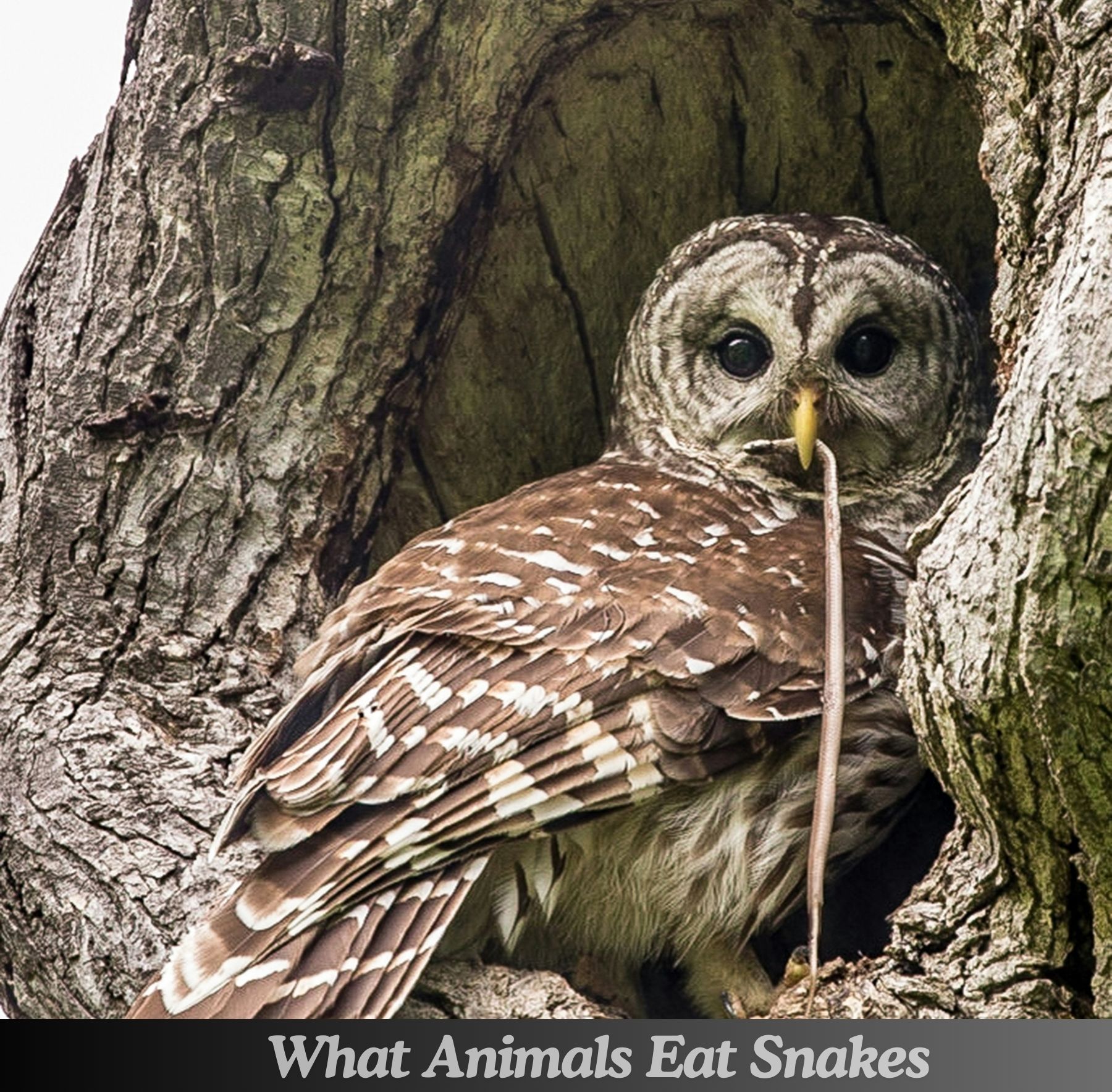Slithering silently through the grass, snakes are fascinating creatures that captivate our curiosity. Have you ever wondered what these sleek predators feast on in the wild? Join us on a journey into the mysterious world of snake feeding habits as we unravel the secrets behind their diets and delve deeper into the role they play in maintaining nature’s delicate balance.
The role of snakes in the ecosystem
What Animals Eat Snakes play a crucial role in maintaining the delicate balance of ecosystems worldwide. As predators, they help control populations of rodents and insects, preventing overpopulation that could disrupt the food chain. By keeping these prey species in check, snakes indirectly benefit plant life by reducing herbivore pressure.
Additionally, snakes themselves serve as a food source for larger predators like birds of prey and mammals, contributing to the intricate web of interdependence within ecosystems. Their presence also influences the behavior and distribution of other species, creating ripple effects throughout the environment.
In aquatic environments, certain snake species help regulate fish populations by preying on smaller individuals. This predation can impact fish community structure and diversity, ultimately shaping the dynamics of aquatic habitats. Snakes play an essential role in maintaining biodiversity and ecosystem health through their predatory activities.
Different types of snakes and their preferred diet
Snakes come in a variety of species, each with its own unique preferences when it comes to food. For example, the green tree python enjoys dining on small birds and mammals, while the king cobra prefers feasting on other snakes. Some snakes like the corn snake have a taste for rodents such as mice and rats.
The boa constrictor is known for consuming larger prey like birds and even monkeys. In contrast, sea snakes have adapted to hunting fish underwater using their specialized diet of aquatic creatures. The rattlesnake typically feeds on rodents but can also consume lizards or insects depending on availability.
With such diverse diets among snake species, it’s fascinating to see how they have evolved to thrive in various habitats by selecting prey that suits their biological needs.
The hunting and eating process of snakes
Snakes are fascinating predators with a unique approach to hunting and eating. They use their keen sense of smell to track down prey, relying on flicking their tongues to detect chemical cues in the air. Once they locate a potential meal, snakes strike swiftly and with precision, injecting venom or constricting their prey.
After subduing the victim, snakes swallow them whole. Their flexible jaws allow them to stretch around larger animals, such as rodents or birds. The digestion process can take several days or even weeks, depending on the size of the meal. Snakes have specialized digestive enzymes that break down bones and other tough tissues that other animals cannot digest.
Some species of snakes are ambush predators, lying in wait for unsuspecting prey to pass by before striking. Others actively hunt for food through stealth and speed. Regardless of their hunting method, snakes play a crucial role in controlling pest populations and maintaining ecological balance within their habitats.
Interesting adaptations of snakes for catching and consuming prey
Snakes have evolved fascinating adaptations that make them efficient predators in their quest for food. One of the most intriguing features is their venomous fangs, which vary in size and potency depending on the species. These specialized teeth allow snakes to inject venom into their prey, immobilizing or killing it before consumption.
Another remarkable adaptation is the ability of some snake species to unhinge their jaws to swallow prey much larger than their head. This incredible flexibility enables them to consume meals that may seem impossible at first glance.
Additionally, snakes possess heat-sensing pits along their jaws called pit organs, which detect infrared radiation emitted by warm-blooded animals. This sensory adaptation gives them a distinct advantage when hunting in low-light conditions or locating hidden prey.
Furthermore, certain snake species have developed camouflage patterns that help them blend seamlessly into their environment, allowing for stealthy approaches towards unsuspecting victims. These adaptations showcase the ingenuity of nature in equipping snakes with tools for successful predation.
How snake feeding habits differ from other animals
Snakes have unique feeding habits that set them apart from other animals in the animal kingdom. Unlike mammals or birds, snakes do not chew their food; instead, they swallow their prey whole due to their lack of teeth for chewing. This allows them to consume larger meals relative to their body size.
Another distinctive trait is that snakes are carnivorous creatures, meaning they exclusively feed on other animals. Their diet consists mainly of rodents, insects, birds, and even smaller reptiles. This specialization in meat-eating sets them apart from omnivores or herbivores found in different species.
Unlike some predators who actively hunt down their prey, snakes use a sit-and-wait strategy known as ambush predation. They patiently wait for unsuspecting prey to come close before striking with precision and speed using venom or constriction to subdue it swiftly.
Furthermore, snakes have incredible adaptations such as heat-sensing pits and unhinging jaws that aid in detecting and capturing prey efficiently. These features make snake feeding habits truly fascinating compared to those of other animals with diverse eating behaviors and strategies adapted for survival in various environments.
Factors that influence snake feeding habits
Factors that influence snake feeding habits are varied and complex. One key factor is the species of the snake, as different snakes have evolved to consume specific types of prey. Environmental factors such as temperature, humidity, and habitat also play a crucial role in determining what snakes eat.
The size and age of the snake can impact its feeding habits as well. Younger snakes may feed more frequently to support their rapid growth, while older snakes might require larger meals less frequently. Seasonal changes can also influence snake diets, with some species adjusting their food preferences based on availability.
Additionally, competition for food sources within a snake’s habitat can drive changes in their feeding behavior. Human activities like deforestation and pollution can disrupt ecosystems and alter prey populations, consequently affecting what snakes have access to eat. Understanding these factors is essential in comprehending the intricate relationship between snakes and their diets.
The impact of human activities on snake diets
Human activities have a significant impact on snake diets, often leading to disruptions in their food sources. Deforestation and habitat destruction result in the loss of prey species for snakes, forcing them to adapt or face starvation. Pollution from chemicals and plastics can contaminate water sources, affecting the health of both snakes and their prey.
Urban development encroaches on snake habitats, limiting their access to suitable hunting grounds. Intentional killing or removal of snakes due to fear or misunderstanding further disrupts the ecosystem balance. Climate change also plays a role in altering the distribution and abundance of prey species that snakes rely on for sustenance.
Conservation efforts are crucial in mitigating these negative effects and preserving snake populations along with their natural food chains. It is essential for us to recognize our impact on wildlife and take steps towards coexisting harmoniously with these fascinating creatures.
Misconceptions about snake diets debunked
Let’s set the record straight on snake diets. One common misconception is that all snakes are strict carnivores, but the truth is some species also consume fruits and vegetation. It’s not a one-size-fits-all scenario when it comes to what snakes eat.
Another myth debunked is the belief that snakes need to eat every day. In reality, they have slower metabolisms and can go for weeks or even months without food, depending on factors like their size and activity level.
Contrary to popular belief, not all snakes prey on rodents. While many do enjoy feasting on mice and rats, there are those that prefer amphibians, birds, eggs, or even other reptiles as part of their diet.
Understanding these nuances in snake diets helps us appreciate the diversity within these fascinating creatures’ feeding habits.
Conclusion
Understanding the intricate feeding habits of snakes is crucial in appreciating their role in the ecosystem. From venomous predators to constrictors, snakes display a diverse range of hunting techniques and prey preferences. By delving into what animals eat snakes, we gain insight into the delicate balance of nature and the interconnectivity of all living organisms. As humans continue to impact snake habitats, it’s essential to recognize how our actions can influence their diets and ultimately disrupt ecosystems. By debunking misconceptions about snake diets and shedding light on their fascinating adaptations for hunting, we deepen our understanding and appreciation for these remarkable reptiles. So next time you encounter a snake in the wild, remember to respect its feeding habits as an integral part of its survival strategy in the complex web of life.












One thought on “Feeding Habits Revealed: Delving into What Animals Eat Snakes”